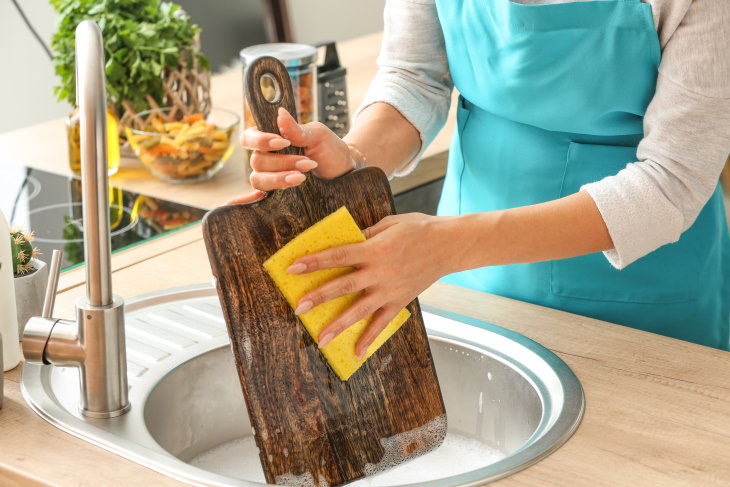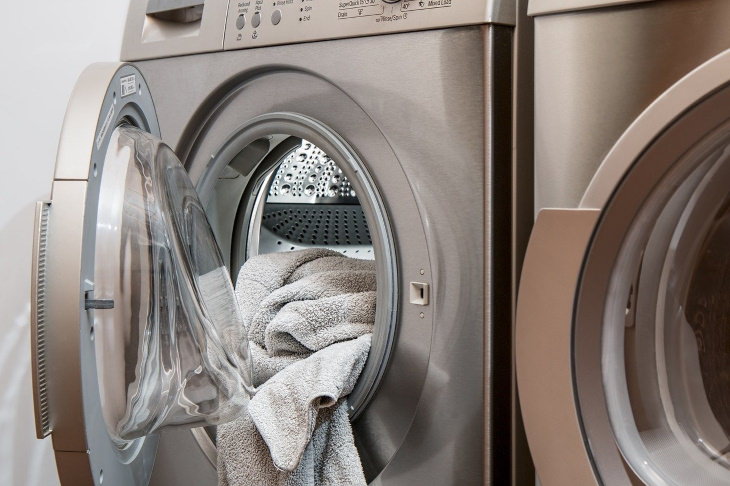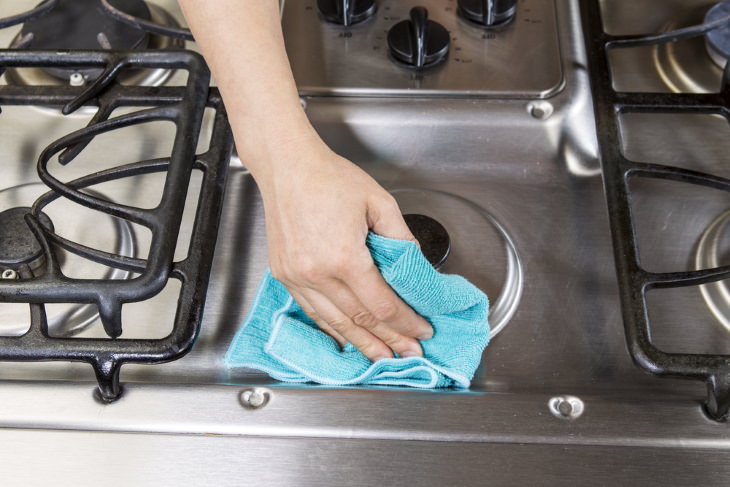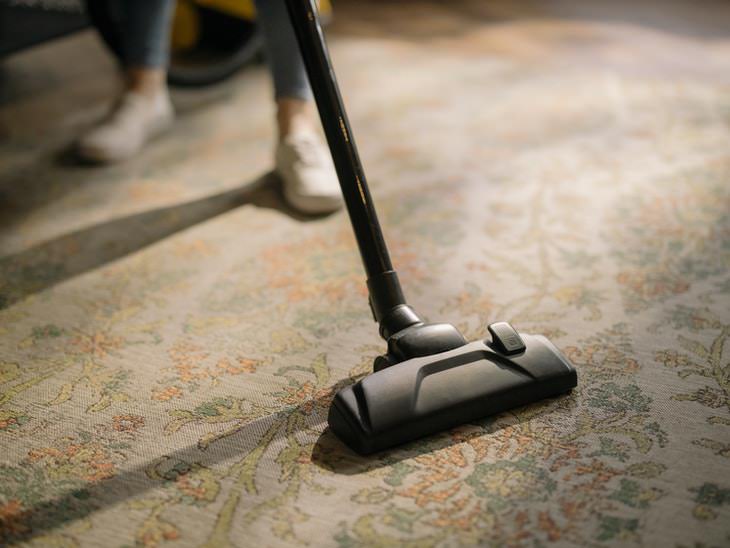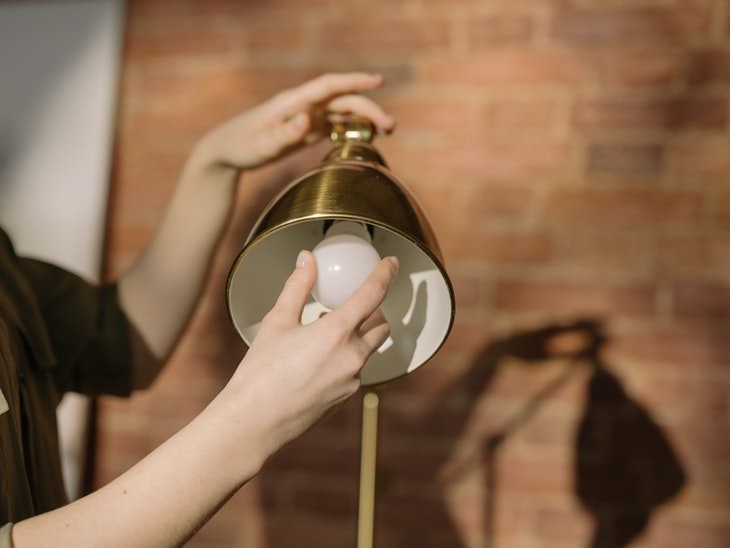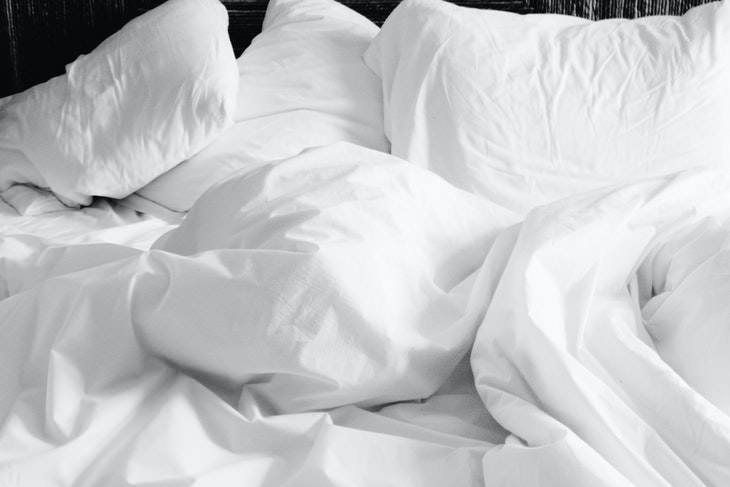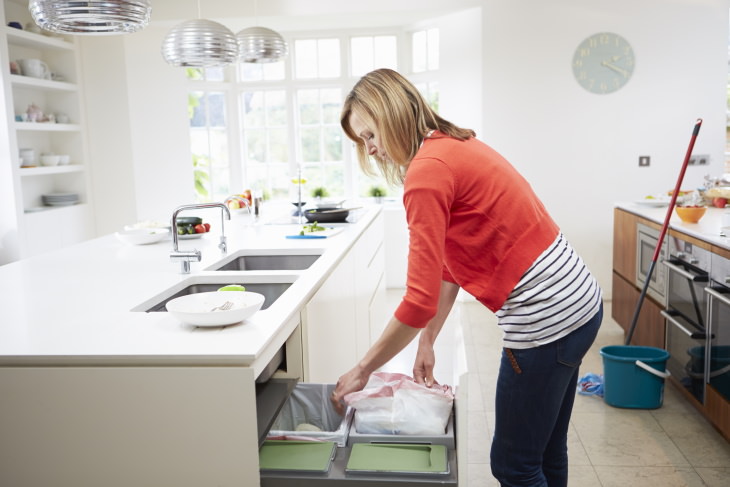1. Cleaning cutting boards with soap
Washing a cutting board isn’t the same as doing the rest of the dishes. For one, you can’t put a dirty cutting board in the dishwasher - a wooden cutting board can warp or crack and a plastic one can melt when they come in contact with hot water. At the same time, washing it with dish detergent is too superficial and will only remove the visible food residue from a cutting board.
The problem with this method is that the majority of germs are lurking deep inside the cuts that develop in wood and plastic, and no dis soap can penetrate these deep cuts. As a result, bacteria start to breed in these cuts and can ultimately contaminate the foods, potentially causing foodborne illness.
Therefore, it’s advisable to disinfect cutting boards regularly by soaking them in a bleach solution or hydrogen peroxide. Dilute 1 tablespoon of bleach in 2 liters (½ gallon) of water, soak the cutting board in the solution for 10-15 minutes, and then rinse with plenty of warm water.
2. Washing windows when it’s sunny
When it comes to cleaning glass and windows in particular, the sun isn’t our best friend at all. This is because glass cleaning products tend to dry too fast in the sun, leaving behind unsightly streaks or a blurry white film. Therefore, the best time to clean windows is actually the early morning or an overcast day. You should also avoid spraying the cleaning solution directly onto glass or mirror surfaces. If you want to find out why that is the case, read our article 7 Cleaning Mistakes Most of Us Still Make.
3. Always using hot water to do laundry
If you ever tried to launder a wool hat or sweater in hot water and it shrunk, you have witnessed first-hand that not all fabrics can handle hot water. And while it’s certainly true that hot water is better at getting out stains than lukewarm water, it’s also true that hot water is significantly more damaging to most fabrics.
Natural fabrics like silk or wool aren’t the only ones that should always be washed in cold water. Most synthetic fabrics like polyester or nylon, especially cheap ones, can melt in hot water. So, it’s safer and better for your electricity bill to do daily laundry that’s not obviously soiled or stained in cold water.
4. Using circular motions to clean stainless steel
A stainless steel finish on a fridge or oven is extremely aesthetically pleasing and quite fashionable, but unfortunately, it’s also more prone to show streaks, smudges, and stains. Even when you clean it regularly, it can look streaky and lackluster. If that’s a problem you’ve observed in your home, we may just have a simple solution.
Essentially, it all boils down to your technique. Instead of cleaning stainless steel surfaces like you would other furniture and windows - using circular motions - take a clean cloth and wipe down the stainless steel along the grain. That’s all there is to it!
5. Vacuuming first
We’ve noticed that many people start cleaning the house by sweeping, mopping, or vacuuming the floor. They then move to other activities, like dusting, wiping down the kitchen table, etc. If you do this, chances are that by the end, you’ll notice that the floor is dirty again, and you need to start cleaning it again.
That’s why most cleaning experts recommend reversing the order and cleaning from top to bottom instead. This way, all the dust from the furniture and the breadcrumbs from the kitchen table will have landed on the ground by the time you start sweeping or vacuuming, and you won’t have to do the same work twice.
6. Forgetting to dust lights and light bulbs
You may think that there’s no harm in leaving the lights and the light bulbs dusty for a few months or until spring cleaning season comes along. Unfortunately, this kind of thinking can be quite dangerous, as dusty light bulbs and lights are actually a common fire hazard. If a dusty light bulb overheats, it can melt the socket and cause damage to the fixture itself, potentially starting a fire. Therefore, you should wipe down the lights, including the light bulbs, more often than you think - about once a month.
7. Forgetting to clean the remote control
When’s the last time you cleaned the remote controls in the house? If you clean the remote controls less often than the toilet, you ought to be alarmed, as according to recent studies conducted by a number of major universities, a TV remote is the dirtiest item in the home.
What’s more, remote controls can carry and spread contagious bacteria and viruses. One study conducted at the University of Virginia, for example, found that about 50% of the remotes they tested had cold viruses on them. To clean the remote properly, follow the manufacturer’s instructions, or wipe it down with a cloth soaked in alcohol.
8. Not laundering pillows
Your bed linens aren’t the only things on your bed that require cleaning. The pillows and even the blankets should be cleaned and aired out on a regular basis. Both your pillow and blanket accumulate dust mites, saliva, body oils, and various bacteria over time, which is why you should wash them. It’s best to leave the yearly cleaning of your winter blanket to the dry cleaners since it’s too big for most non-commercial washing machines.
9. Disregarding the trash cans
It’s certainly not a pleasant realization, but trashcans need cleaning, too. In fact, more often than not, the source of unpleasant smells in the kitchen or the bathroom is a neglected trash can. Experts point out that’s it’s important to clean the trash cans in your home at least once a week. Bleach or any other disinfectant cleaner is optimal for this job, as trash cans can become the breeding ground for quite a lot of germs, as you may imagine.
10. Using the same cloth to clean everything
This last mistake we will discuss is easily also the most common. If you’re using the same cleaning cloth to wipe down the kitchen counter and the tiles around the toilet, and then also decide to clean the bathroom sink with the same rag, you’re essentially spreading the grime and germs through the entire house. As you can guess, this is not ideal. In fact, it can be quite dangerous for your health, not to mention that it also defeats the purpose of cleaning in the first place.
The optimal solution is to have a designated cleaning cloth for every room. You can use microfiber cloths or just cut up an old T-shirt into pieces and use those to clean the house. Don’t forget to toss the cleaning cloths in the washer then each week - cleaning supplies need cleaning, too.
Please share this article if you found it useful!

